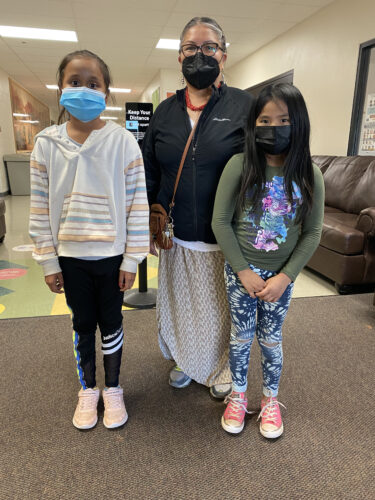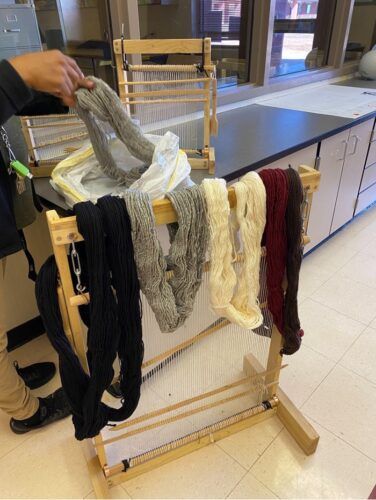Puerto Rico has had a special place in my heart ever since I first visited the island in 2018 to help rebuild homes after the devastation of Hurricane Maria. Since then, we at Children Incorporated have been working hard to establish our first affiliated site in Puerto Rico, partnering with Iglesia Bautista de Metrópolis to help support children and families for the long-term. This past April, I was able to return to Puerto Rico for the first time in five years to visit with our volunteer coordinators and hear more about how our sponsors and donors are changing the lives of those in need.
The urgent need to help with building repairs was the reason I first made a trip to Puerto Rico.
In this edition of Stories of Hope, I want to dive into the history of Puerto Rico and talk about the current situation that citizens face in order to give our supporters a better understanding of why I felt affiliating with Iglesia Bautista de Metrópolis was so fitting for Children Incorporated’s mission and values, and why your donations are important to this vulnerable territory.
A Visual of Puerto Rico

Puerto Rico has a rich history that spans hundreds of years, which is memorialized throughout the capital of San Juan.
Puerto Rico is an archipelago between the Caribbean Sea and the North Atlantic Ocean. It is located approximately 1,000 miles southeast of Miami, Florida. It is east of the Dominican Republic and west of the Virgin Islands.
Puerto Rico is presently a territory of the United States with Commonwealth status, and includes the main island and several smaller islands. The main island is almost rectangular in shape. It is about 110 miles long and 35 ½ miles wide, making it larger than Rhode Island and smaller than Connecticut. It would take about three hours to drive from the east end of the island to the west end.
Puerto Rico is about 60% mountainous terrain with the exception of its coastal areas. The main island has a beautiful and incredibly varied landscape consisting of beaches, caves, deserts, rain forests, rivers, and the sea and ocean. The central mountains and rivers carry water throughout the island. The north coast tends to get more rain and is thus more fertile. The south coast is drier.
Puerto Rico is located along the Mona Passage, a strait that separates Puerto Rico and the island of Hispaniola (comprising the countries of the Dominican Republic and Haiti). The passage is a key shipping lane to the Panama Canal. Puerto Rico’s capital, San Juan, also has one of the best natural harbors in the Caribbean.
The history of the commonwealth of Puerto Rico
Puerto Rico has a complicated colonial history and political status. As it is a U.S. territory, its residents are U.S. citizens. But while subject to U.S. laws, residents of the island cannot vote in U.S. presidential elections, and the island lacks voting representation in Congress. Its status as a territory means it is neither a U.S. state nor an independent country.
When Christopher Columbus landed on the island in 1493, native Tainos inhabited the land. Columbus claimed the island for Spain, and for 400 years, Puerto Rico was under Spanish colonial rule. In 1517, the Spanish crown authorized the importation of enslaved Africans. During the time of Spanish colonial rule, the people of Puerto Rico experienced extreme poverty, repression, and taxation. In 1868, a revolt and uprising were attempted, and this was a turning point in relations between the native and enslaved people and the Spanish crown. Spain began to grant the natives some autonomy, and political parties were born. In 1873, slavery was finally abolished.
The political reforms had scarcely any time to develop. In 1898, just thirty years after the attempted uprising, the United States declared war on Spain. U.S. troops invaded Puerto Rico and occupied it during the remainder of the Spanish-American War. When the treaty was signed, Spain ceded Puerto Rico to the U.S.
In addition to its manufacturing sector, the island’s beautiful beaches and tropical climate contribute to a robust tourism industry.
For literally hundreds of years, the people of Puerto Rico have worked to decolonize their home. But there has been a long disagreement on how best to resolve this. Then, in November of 2020, Puerto Ricans voted in a nonbinding referendum on statehood. About 53% favored it, while 47% rejected it. However, the larger problem was that only 55% of Puerto Ricans voted in the referendum at all. Thus, while statehood proponents viewed the results as proof most citizens wanted statehood, opponents questioned the validity of the votes, citing their belief that their referendum was promoted by the pro-statehood group and the fact that it was non-binding anyway.
Economy and Poverty in Puerto Rico
For hundreds of years during its colonial period, Puerto Rico had an agricultural economy based on coffee, sugar, and tobacco. With industrialization, the economy changed. Today, Puerto Rico is known for the manufacturing of medical and pharmaceutical products. Agricultural biotechnology is growing. Much of the workforce is highly educated. The island has a university system that, as noted by its Department of Economic Development, “generates a steady stream of new talent.”
In addition to its manufacturing sector, the island’s beautiful beaches and tropical climate contribute to a robust tourism industry.
So — why is there so much poverty in Puerto Rico? There are several contributing factors which include:
- Puerto Rico’s relatively small size as an island and the fact there are few natural resources to
produce highly profitable raw materials (e.g. oil, coal, natural gas, or metals) for sale/trade
over very long periods of time).
- A federal funding shortfall means that Puerto Rico doesn’t always get the support
it needs to build its economy.
- The island’s shrinking population of young working people due to outmigration.
This means its population is aging more rapidly than most other countries.
- Natural disasters and the COVID-19 pandemic, which have caused further economic
blows to the economy in more recent years. The impact of Hurricane
Maria in 2018 was devastating, and its impact is still being felt today.
Rebuilding after Hurricane Maria
Hurricane Irma had struck Puerto Rico less than two weeks before Maria, and 80,000 people were still without power as Hurricane Maria approached. Disaster supplies had been distributed for Hurricane Irma, but there was no time to replenish them before Hurricane Maria struck. The damages and outages caused by Hurricane Maria overwhelmed the island’s aging infrastructure and annihilated the power grid.

The capital of San Juan is home to many beautiful buildings, which showcases Puerto Rico’s diverse and artistic influences.
Sadly, it is estimated that 3,000 people lost their lives. Almost immediately, Puerto Rico was declared a federal disaster zone. In the week after the hurricane, 95% of the island had no electricity or cell phone service, and less than half of the island had potable water. Debris-clogged roads added to logistical problems. One month after the hurricane, all hospitals were running, but were still relying on backup generators with limited power. Almost one year after the hurricane, there were still numerous areas without electricity. To date, it is the longest blackout in U.S. history at eleven months.
The urgent need to help with building repairs was the reason I first made a trip to Puerto Rico. It was the connection through Grace Baptist (long time donors to Children Incorporated) that gave me an opportunity to serve the children on this beautiful island.
To this day, five and a half years after Hurricane Maria, Puerto Rico is still considered in recovery due to the billions of dollars of damage and destruction that were sustained. The Federal Emergency Management Agency [FEMA] has dedicated billions for infrastructure resilience efforts, but much has still not been spent.
More difficulty for a small island
To further cause strife to its residents, starting on December 28, 2019 and progressing into early 2020, Puerto Rico was struck by an “earthquake swarm,” consisting of hundreds of very small quakes. However, eleven were magnitude five or greater. The most damaging was an earthquake measured at 6.4 on January 7th. Power was lost island-wide. The southern part of the island suffered the most damage, especially the city of Ponce, the closest city to the earthquake’s epicenter. Lives were lost, businesses and homes were damaged and families were displaced.
At first, the island’s relative isolation helped slow the transmission of COVID-19, but eventually Puerto Rico was overwhelmed just like the rest of the world. COVID-19 reached its first peak in Puerto Rico in November 2020. There was another surge from mid-March to mid- April 2021 which was attributed to people returning to in-person work, as well as to dining and shopping indoors. Families had also gathered to celebrate Holy Week. Another surge struck around January 2022, when the omicron variant reached the island.
Pandemic restrictions had a significant negative impact on the island’s economy. The loss of jobs within Puerto Rico’s tourism industry, which comprises almost 30% of its gross domestic product, resulted in a significant increase in unemployment.
Although tourism has rebounded in the past year, the impact of the pandemic can still be felt as families attempt to recover from months of job losses, increased food insecurity and rising debt.
Next week, I look forward to sharing with you all about my visit to Iglesia Bautista de Metrópolis from April 2023.
When Hurricane Fiona struck Puerto Rico in September of 2022, it was a Category 1 storm. But it caused additional damage to an already vulnerable island that was still recovering from damage caused five years prior by Hurricanes Irma and Maria. The hurricane struck hardest in the southwestern part of the island. In the remote areas, it made life even harder.
While Fiona did not have winds as strong as Maria, it had more rain. Torrential rains caused severe flooding across the island (30” in some areas of the south), and the flooding was actually more widespread than during Maria. Roads that had finally been repaired after Maria were swept away again.
Experts say hurricanes cannot be studied as unique events. Instead, to properly assess long term economic impacts, one must study the compounding effects of multiple storm events. While not to the same degree as Maria’s damage, Fiona was still a multi-billion-dollar damage event that added to Puerto Rico’s economic burden.
Next week, I look forward to sharing with you all about my visit to Iglesia Bautista de Metrópolis in April 2023, when I had a chance to meet with our volunteer coordinators and hear more about the ways in which our sponsors and donors are helping children and their families in the community in Puerto Rico.
***
How do I sponsor a child with Children Incorporated?
You can sponsor a child in one of three ways: call our office at 1-800-538-5381 and speak with one of our staff members; email us at sponsorship@children-inc.org; or go online to our sponsorship portal, create an account, and search for a child that is available for sponsorship.
SPONSOR A CHILD





